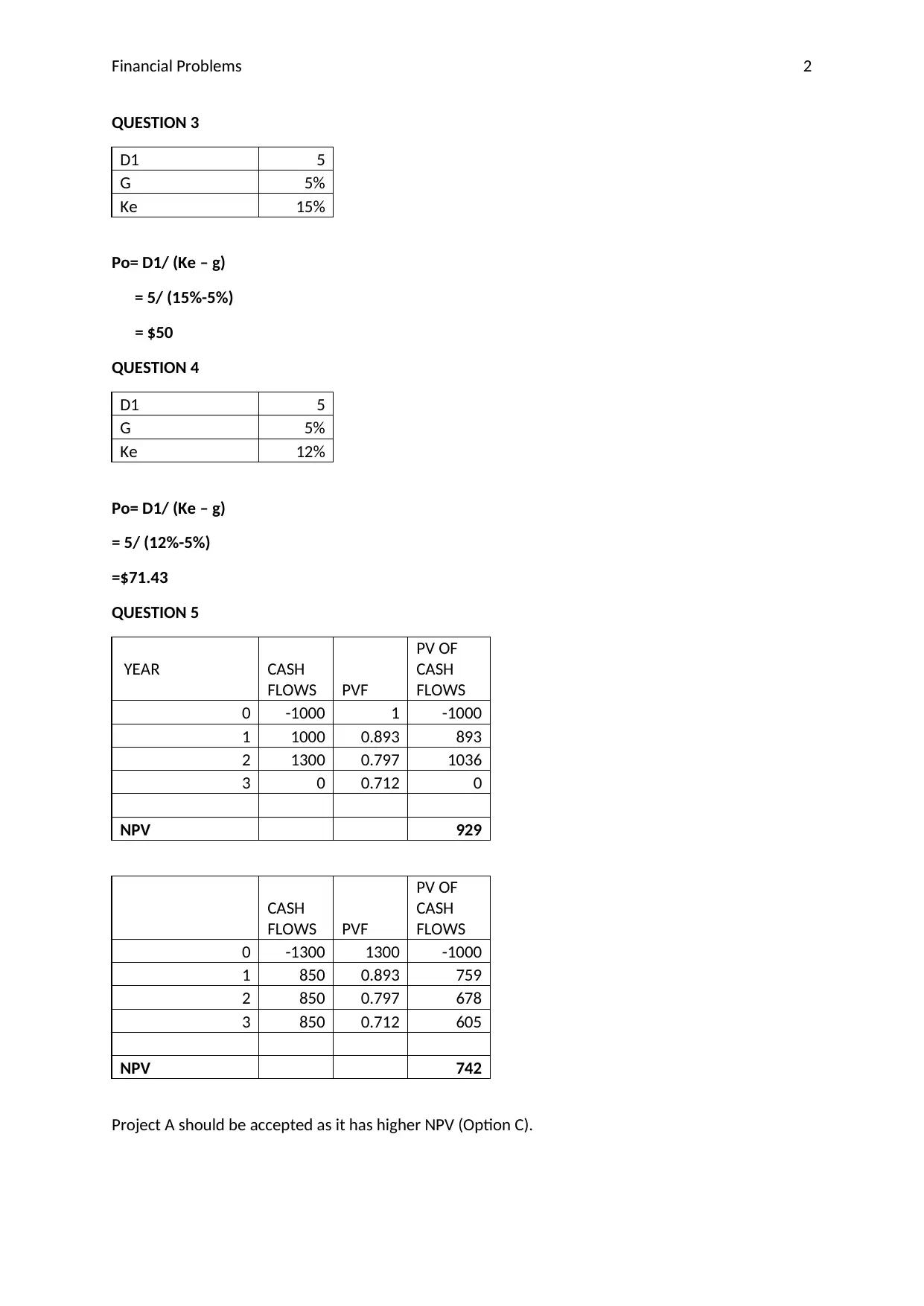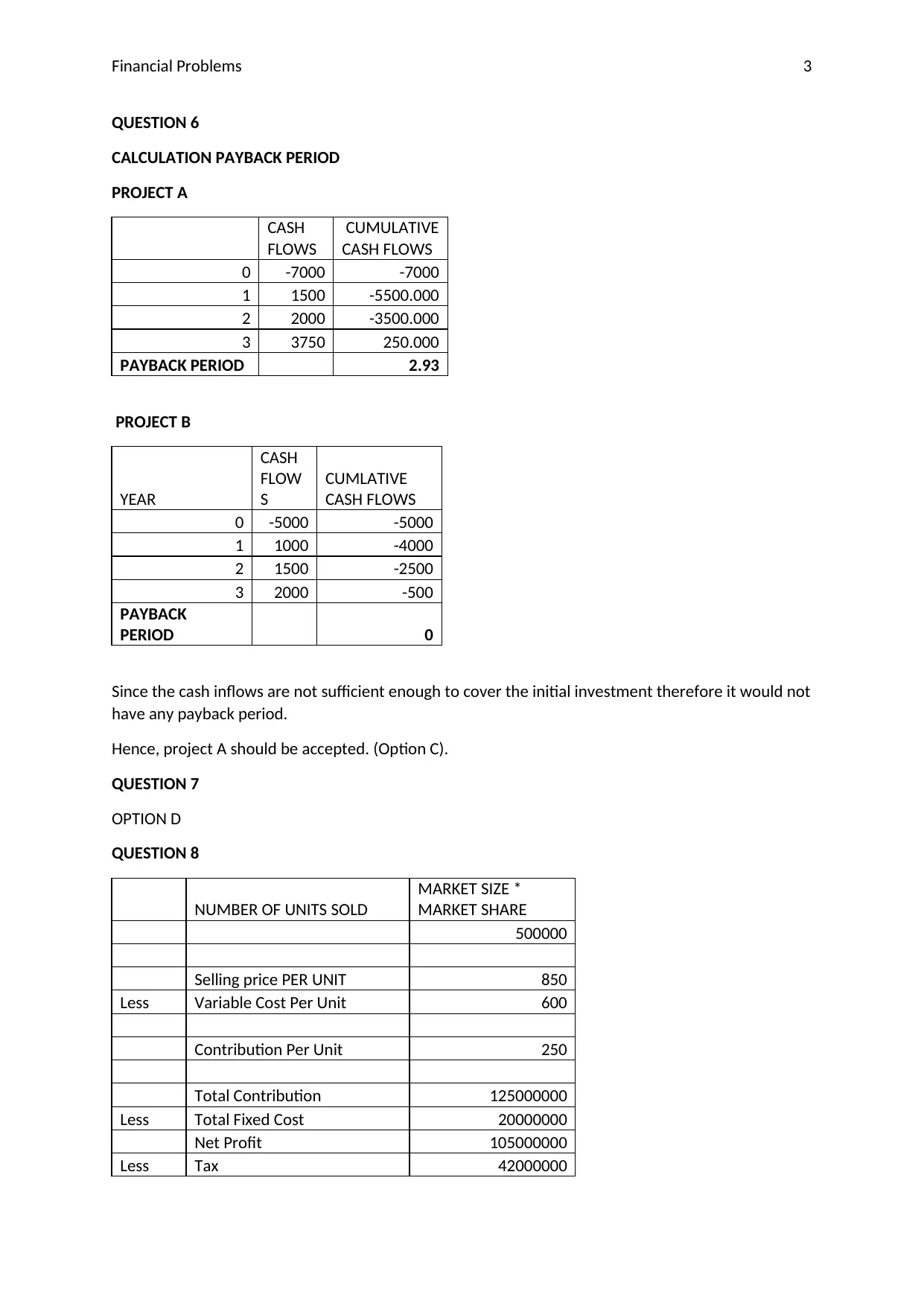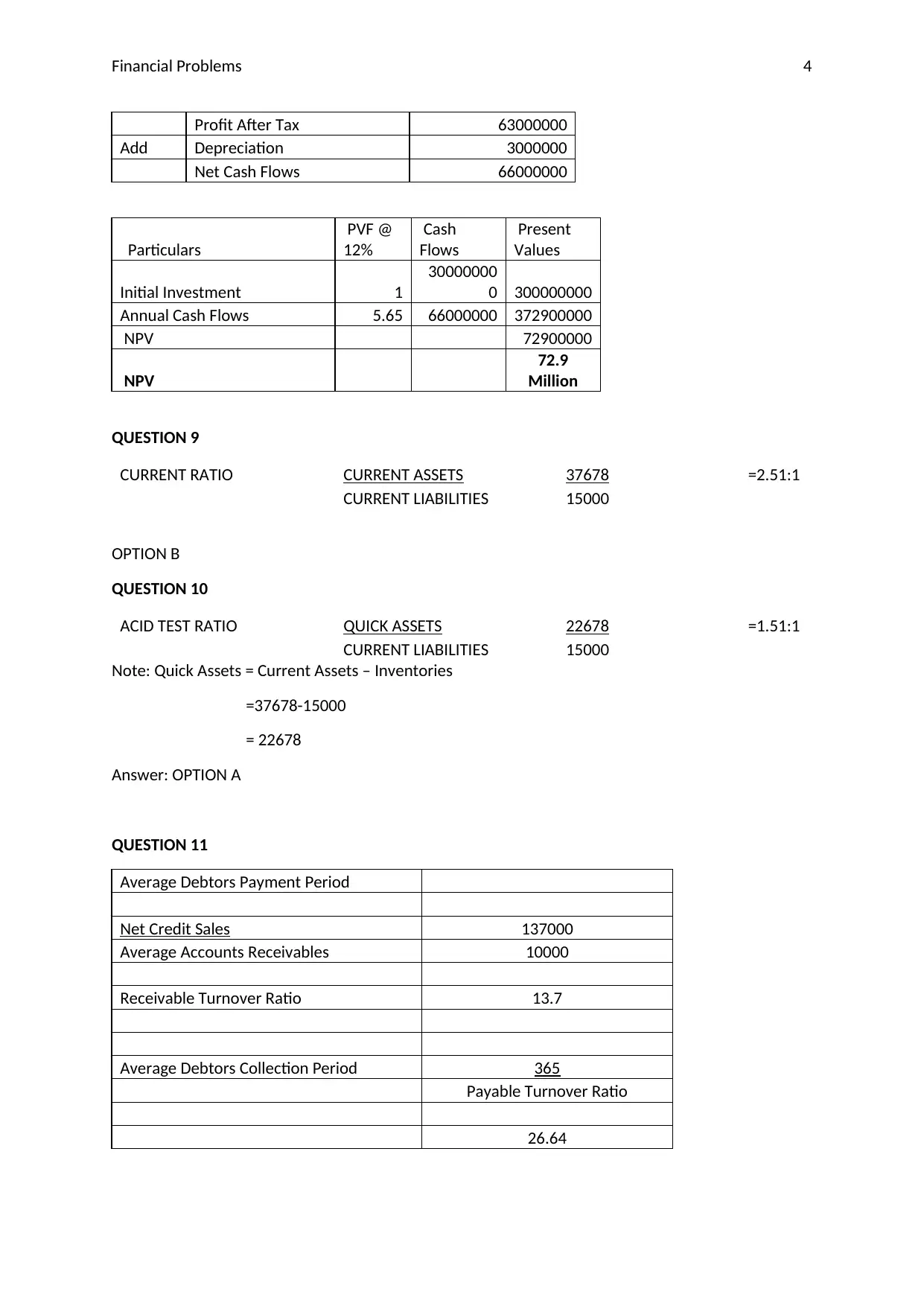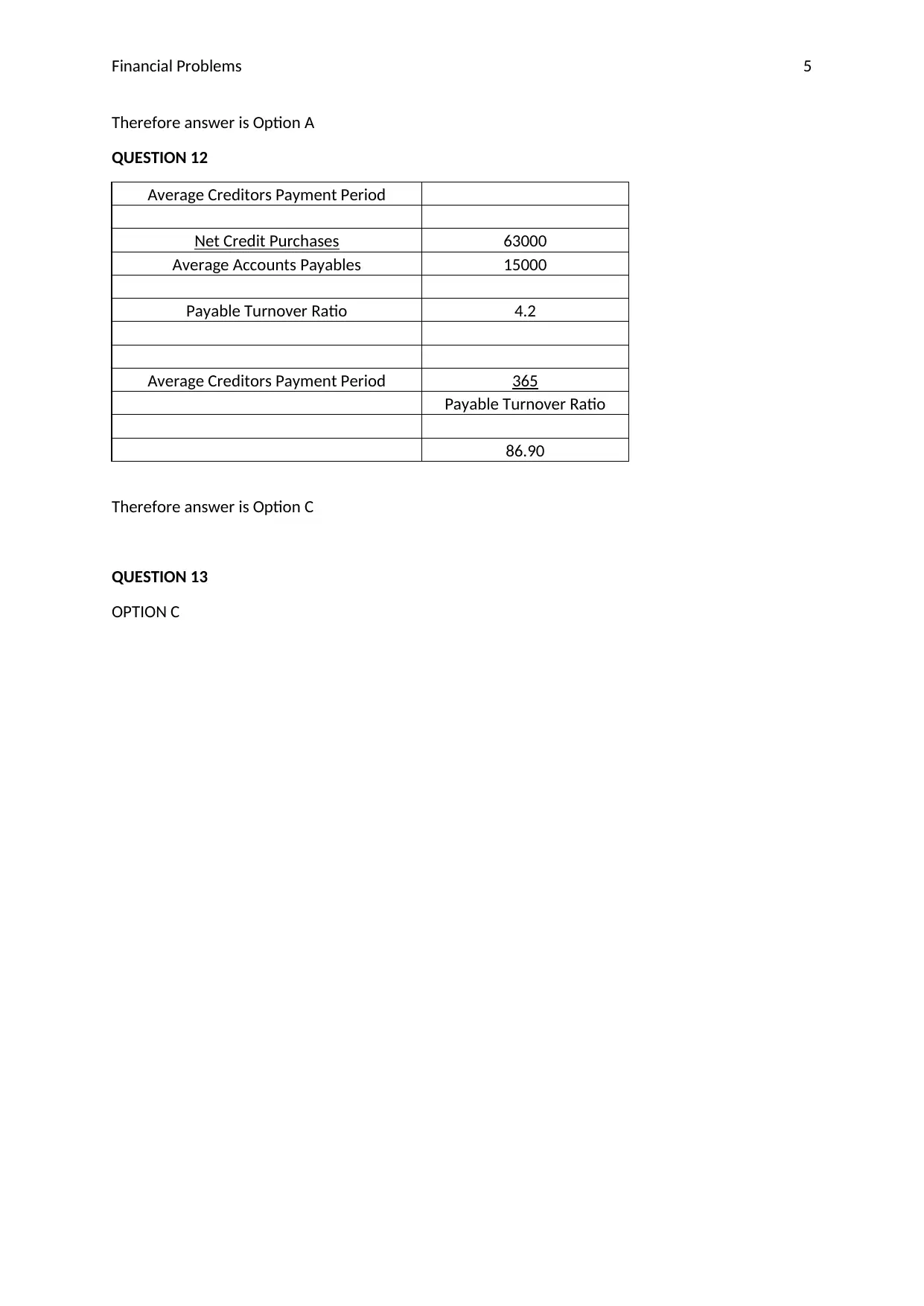Investment Appraisal: Financial Problems and Solutions Guide
VerifiedAdded on 2023/06/15
|7
|560
|311
Homework Assignment
AI Summary
This assignment provides solutions to several financial problems, primarily focusing on investment analysis and financial ratios. It begins by calculating the Net Present Value (NPV) for different investment options, demonstrating the application of discounted cash flow techniques to determine project profitability. The assignment also addresses stock valuation, calculating the present value of future dividend payments using the dividend discount model. Furthermore, it evaluates the payback period for different projects, aiding in short-term investment decisions. The solutions extend to analyzing a company's financial health through ratio analysis, including current ratio, quick ratio, and acid-test ratio, along with calculations for average debtor and creditor payment periods. The document is contributed by a student and available on Desklib, offering a resource for students studying finance and investment analysis, providing step-by-step solutions and explanations to enhance understanding and learning.
1 out of 7














![[object Object]](/_next/static/media/star-bottom.7253800d.svg)